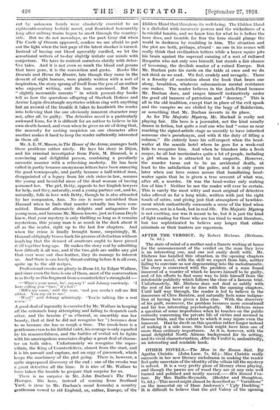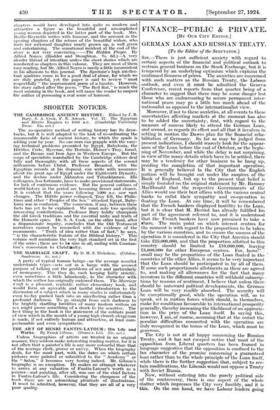OTHER NOVELS.—The Man in the Brown Sidt. By Agatha Christie.
(John Lane. 7s. 6d.)--Miss Christie really, succeeds in her new literary melodrama in making the reader feel quite uncertain of the identity of the villain till the mystery is solved. It is a very pretty piece of literary chess playing, and though the pawns are, of wood they are at any rate well turned and polished and neatly moved.—His Second Ven- ture. By Mrs. Baillie-Reynolds. (Hodder and Stoughton. 7s. 6d.)—This novel might almost be described as " Variations" on the immortal air of Hans Andersen's " Ugly Duckling." It is difficult to believe that the girl Valery of the opening chapters would have developed into quite so modern and attractive a figure as the beautiful and accomplished young woman depicted in the latter part of the book. Mrs. Baillie-Reynolds writes with humour, and the account in the opening chapters of the return of the beautiful widow, who finds her awkward daughter nearly grown up, is well given and entertaining. The sensational incident at the end of the story is not very convincing.—The Hidden Player. By Alfred Noyes. (Hodder and Stoughton. 7s. 6d.)—A very slender thread of intention unites the short stories which are numbered as chapters in this volume. They are most of them easy reading, but Mr. Alfred Noyes is surely a little inconsistent in his allusions to this journal. The Spectator's high intellec-. tual qualities come in for a good deal of abuse, for which we are duly grateful, yet the paper is said to -review " most respectfully " the impressionist poem of a •lunatic. However, the story called after-the poem, " The Red Rat," is' much the most amusing in the book, and will cause the reader to suspect the author of possessing a real sense of humour.







































 Previous page
Previous page